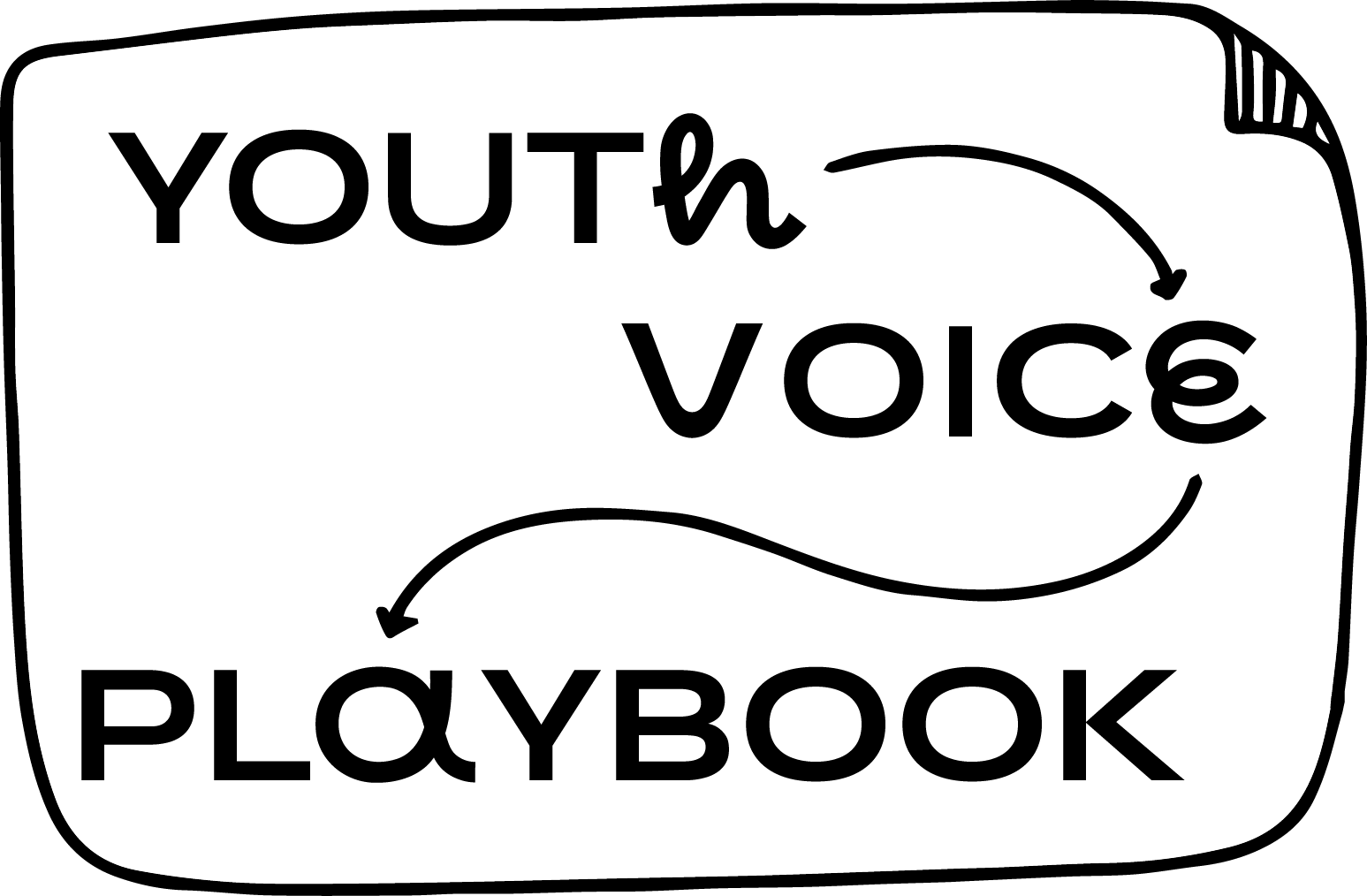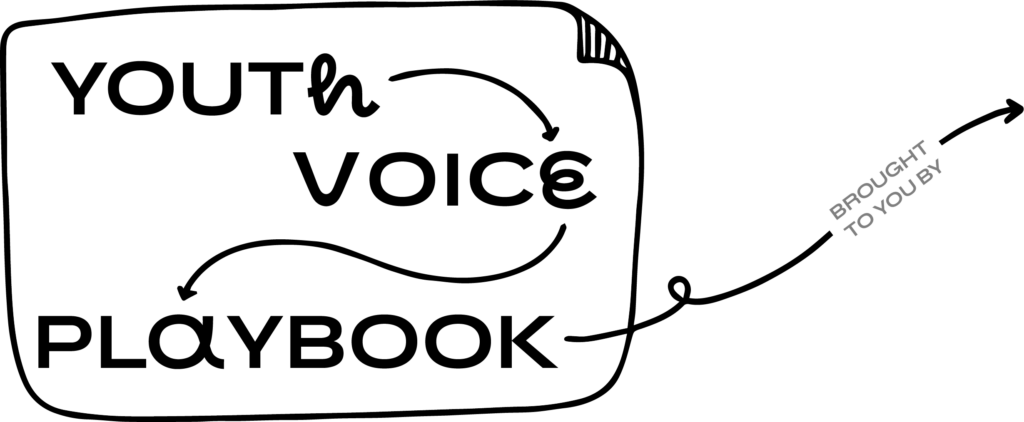How will I ever…
…convince youth to join my project?
How much money…
…do you pay kids these days?
If I pay these youth participants…
…do I need to give them tax paperwork? Wait… am I an employer now?
Before you start inviting youth to join you, you should make sure you’ve thought through how you’ll make it logistically feasible for them to participate and how you’ll make it worth their time. You’ll want to consider the following when establishing your budget and gathering resources for your project:
- Incentives and compensation for participants
- Support staff
- Additional resources (like technology or translation) that might be needed for full participation and inclusion
- Scheduling
In this chapter, we will explore each of those topics in turn. Let’s dive in!
Side note: If you are just looking for some strategic, time-sensitive, youth perspective on your product, but don’t have the time and resources to work through everything we outline in this chapter, we hear you and we get it! If this all feels like too much, consider partnering closely with an existing organization like In Tandem that can help you navigate this process responsibly, ethically, and with greater ease. Partnering doesn’t absolve you of responsibility for ensuring that young people have a safe and positive experience or compensating them appropriately. But it does make the logistics a heck of a lot easier! So check out this chapter to get a sense of those logistics, but don’t panic – you don’t have to do all of this alone.
Incentives and compensation for participants
We believe young people should be compensated for their time and expertise. This can happen either through direct payment or a thank you gift, but it should happen whenever possible. Their time and insights are valuable! Here are a few of the things we’ve learned over the years about incentives and compensation.
Remove barriers.
Incentivizing participation starts with removing barriers. Remember, many teens are in school, play sports, work part-time jobs, take care of family members, and/or participate in other extracurricular activities; they’re busy! You’ll need to find time that is convenient for your participants, which is often different from a time that’s during typical adult work hours. Think about compensating accordingly if your participants are missing out on other income-generating activities to take part in your project, too.
Check your policies.
Check your institutional policies first. There are often institutional considerations related to compensating youth. For example, if you are recruiting participants through schools, it’s important to know whether the school district prohibits paying students directly; if so, an alternative form of compensation can be explored (e.g., a class gift given to the teacher/school). Incentives and compensation policies depend on the organization / institution and it is best to check ahead of time. Key stakeholders to talk to may include your IRB, finance department, and/or your legal team.

Example from Center for Digital Thriving
Our university’s guidelines include special considerations around engaging people under 18 in different kinds of research activities and programs. This includes established guidelines – as well as restrictions – on incentives and payments. Compensating youth for their time and contributions is an important part of our team’s values, and one that we’ve thought about in different ways related to different projects. Before we establish an incentive or thank you gift, we contact our Youth Protections Office or our IRB to understand what types of incentives we can provide (e.g., gift cards, cash, etc.). For research projects (like focus groups or surveys), we typically have to make sure we are providing an incentive for research projects that would not be considered “coercive” (e.g., $30 gift cards per 60 minute session or $10 for a 15 minute survey). However, in the case of our youth advisory board, teens cannot be directly paid for involvement, so we give them thank you gift cards for their time instead.
Consider various options for compensation.
If you are going to compensate youth directly, consider various options. For example, we often use online gift cards as a way to compensate youth for their time. This allows us to minimize the amount of personal information we collect. Sometimes we’ve given gift cards directly to things like Doordash or Apple; other times we’ve given Visa or Mastercard gift cards that can act like cash (though there are usually some restrictions on where youth can use them). More information about some of these online gift cards in the Resources section below.
Minimize the personal info you collect.
If you do go with cash, try to minimize the personal information you collect. The less sensitive information you collect, the less risk to both you and the youth. So, to pay cash, you may want to explore an app like Venmo or CashApp to minimize access and risk of exposure to personal banking information. Setting up direct deposit requires collecting some sort of banking information; if you do choose this route, make sure you collect that information in a secure way. You can always pay with envelopes of cash, but we don’t really recommend it…
Beyond the obvious data security considerations here, there are also inclusion implications to the personal data you request – for example, youth who are undocumented might not be able to provide things like a SSN. Many young people also don’t have an independent bank account, so they may need to use their parents’ bank account; some young people might feel uncomfortable providing personal information because they don’t want to disclose their participation to their parents or guardians, especially if the topic of the project touches on sexuality, mental health, or other personal topics.
Do your homework before you hire.
If you are planning to actually hire young people, make sure you do your homework first. Remember, there are child labor laws! Each state has different restrictions on whether minors can work as employees or independent contractors, how many hours they can work per week, and what protections need to be in place for them. If you plan to actually hire minors (or any young people) to work for you, you should get some legal counsel about relevant laws, how to handle taxes, paperwork, and more. However, in most cases you won’t actually need to hire your youth partners as employees, so don’t worry too much about this at this stage!
How much should you pay?
The big question about compensation: how do you decide on a dollar amount? There’s no hard-and-fast rule here, but here are a few considerations.
Honor their expertise.
First, the base amount should be enough to honor the expertise your young people are providing, and also to cover the opportunity cost of whatever else they could be doing with their time. This might mean starting with a comparison to the earnings they might be making at a different part-time job; for others, this might mean starting with whatever your organization’s going rate is for any external consultant. This is a big question worth grappling with, as we’re really talking about how much value we assign to their expertise!

Example from Hopelab
We typically pay participants $100 for interviews or focus groups that may last up to 90 minutes (in-person or remote). For interviews or focus groups that will last 1 hour or less, we pay $75. For surveys, it depends on the length and depth of the survey. If it generally takes 20 minutes or less to fill out, we compensate at $20 per survey. This can be adjusted if the survey takes considerably longer to complete. A rule of thumb for us is at least $1 per minute of participants’ time. While this is on the higher side for participant compensation, we believe in compensating young people as experts in the experience of what it’s like to be a teenager or young adult today.
Cover their expenses.
Second, the compensation should be more than enough to cover the expenses associated with participating. For example, if you are asking young people to come to your office, you need to either increase the amount you’re paying them by enough to afford an Uber ride there and back, or actually pay for the transportation directly (in addition to their direct compensation).
Consider the emotional burden of your questions.
Third, consider increasing the compensation from the base amount depending on the emotional burden of the questions you wish to ask. Exploration of social identities such as race, gender, sexuality, class, religion, citizenship, ability/disability, and mental health status carry a higher emotional burden and we believe in compensating for this. We also recommend providing other support resources to youth if we’re asking about difficult topics; more on this in the next section.
Avoid coercion.
Finally, the compensation amount should not be coercive. Especially if you are working with more economically disadvantaged young people, pay attention to the power dynamics – offering a lot of money to them for participation can make it very difficult for them to say no, even if they don’t actually want to participate. Be thoughtful about where this line is, and also about how you reinforce youth assent even once they’ve joined your project. For example, you can reassure participants that they can skip over any questions they feel uncomfortable answering or end their participation at any time and still receive full compensation for participating.

Example from Character Lab
Youth in our CLIP program join us for a year. During that time, they participate in a number of projects which vary in time commitment, topic, type of engagement, and emotional involvement required. To compensate participants, we pay all students a non-qualified scholarship, which is disbursed in quarterly stipends at the beginning of each quarter. The stipend is not based on them providing any specific services or doing any specific work – it is a scholarship designed to allow them to participate in our educational program, and thus they receive it if they stay active in the program learning activities. The scholarship does not restrict what youth can spend their money on either, allowing youth to be autonomous in spending or saving their compensation.
To avoid coercion to participate in any particular activities, youth earn points for each activity they participate in. The points correlate with the time and effort it takes to complete each (e.g.: written, asynchronous requests under 30 minutes are equal to one point, while synchronous focus groups that last an hour are worth two points). Youth can participate in these activities however much or little they are able; additional bonuses based on the tiered points system are also paid quarterly. This also helps incentivize students to stay active in the program, without paying youth directly for any particular activities, thus avoiding both a fee-for-service model and possible coercion.
Non-qualified scholarships are considered taxable income. To support our young people in navigating that, we provide them with a letter each January sharing how much money they received from the scholarship, and also provide them with some general information on filing taxes (which is not legal tax advice, but hopefully helps them get started!) An example of this is included in the Resources section at the end of this chapter.
Planning for support staff
As you are planning your project, you’ll want to also think about the resources your team needs to engage young people well. This includes training and preparation to work effectively with youth, which we’ve already touched on some in chapter 1. It may also require identifying who on your team is available during evening hours, when teens are more often available.
Another resource to consider is interpretation. This of course includes linguistic translation, e.g. if you have youth partners who are more comfortable in Spanish than English, it’s worth exploring if you have Spanish-speaking staff on the project or can hire a Spanish translator. Additionally, if you have youth partners who are deaf, this would also include sign language interpretation or live transcription services.
Lastly, and most importantly, plan ahead to ensure you know about appropriate psycho-social support resources to allow participants to care for their mental/emotional well-being after engaging in the project. There are many excellent, freely available online resources (we’ll link to some in the Resources section). You can even find local mental health services, online support resources that are relevant to the topic, or even offer support from a professional to be available to debrief or meet individually with participants if you have a highly sensitive topic. Some of this has already been covered in chapter 2, but it’s worth reiterating here that it does take some planning (and maybe funds).
Providing additional resources to ensure access
For projects where you’re asking youth to participate virtually, you’ll need to consider access to technology for youth. While many young people already have access to the internet and devices, it is worth asking participants ahead of time if they will need any technological or other support to be able to fully engage in the session. If you can help provide these resources, or adjust the methods you plan to use in order to accommodate those needs, you may be able to include voices that might otherwise be excluded from this work.

Example from Character Lab
The CLIP program is fully remote, and has participants from a wide diversity of locations and situations. We’ve found that many young people participate more easily if they’re given access to a device that’s not a personal cell phone. Although a phone and a data plan can work in a pinch, a stable internet connection and a larger device can make it much easier for youth to be on camera, see any visuals we’re using, have a good audio connection, and participate fully in virtual activities. To facilitate this, when students are accepted to the CLIP program, they fill out a survey and share about any support they might need to participate fully. As part of this survey, we ask if they have a strong internet connection, a device that will let them connect to Zoom calls, and a private and quiet space to participate. For students who say no to any of those questions, we follow up to learn more about their situation. If the circumstances require it, we purchase an internet hotspot (and pay for the monthly bills for the duration of their time in the program), a laptop (which they get to keep after they leave the program), and/or noise-canceling headphones. This is obviously a huge financial investment, and we recognize that not every organization will have the funding to provide these precise supports! However, these up-front investments in access have allowed young people to participate in our program who might otherwise not be able to participate fully; this is part of our commitment to equity and representation. Even if you can’t do something at the same scale, we encourage you to think about how you can help increase access, potentially by partnering with organizations that have the resources to make research more accessible, by finding creative solutions (e.g. working with young people’s schools to let them take laptops home over the summer in order to participate in your meetings), or by ensuring that your activities are mobile-friendly so young people can participate on their personal cell phones.
Scheduling
We’ve included this note in the Budgets & Resources chapter because time itself is a resource! And because scheduling is one of the places that adultism often shows up, we thought it worth mentioning here.
If you want youth to be able to meaningfully engage with your project, you will need to select a time where youth can join distraction-free. We recommend scheduling your activity outside of school hours if you are working with students; if you’re working with students across the US, you will also need to accommodate different time zones. (If our students are distributed across the country, our earliest start time is usually 7pm ET / 6pm CT / 5pm MT / 4pm PT!) Keep in mind that youth on school breaks, not in school, or in college might have more flexibility in their schedules. Scheduling requires a responsive mindset. While something like scheduling a time seems trivial, this is an important piece of centering youth in your project!
Resources, activities, and digging deeper

Example survey to assess youth needs
This is a copy of the survey Character Lab uses to uncover what additional supports young people might need to participate fully in our CLIP program. In particular, pages 9-12 have the questions that we use to assess what sort of additional support students may need from us to ensure they can participate fully.

Gift card services
There are a lot of good reasons to use gift cards when compensating youth, as described in the linked site. When using gift cards, we have received the most positive feedback when young people are allowed to choose what those gift cards are for. (Don’t assume everyone wants a Red Lobster gift card!) These platforms allow that, and we have used them with success (though there are probably other good ones too!):
- BHN Rewards (formerly called Rybbon)
- Tango Cards
- Ethnio Incentives

Intro to taxes
Taxes are scary, especially to young people! Character Lab developed this document to help provide some general guidance to participants in our CLIP program, so that they would be able to make informed decisions about how to handle their stipend payments. This is not formal legal or financial advice, but we’ve found it helps them ask the right questions.

Student support staff hiring materials
This document from Character Lab’s CLIP program outlines the scope of work for a part-time consultant we brought on to the team to ensure we could support students effectively. Feel free to use it as a starting point for your own hiring of professional staff.
What to Read Next
At this point, you might be feeling overwhelmed by how hard this all seems. And it’s true that there are a lot of legal, financial, and logistical things to get sorted out before you start doing this work – which is part of why many people don’t do it! But three things to know before you give up:
First, you’re not alone in figuring this all out. Like we’ve mentioned above, there are organizations that can do this legwork for you, like In Tandem, and many other organizations also working to make this priority an easier practical reality.
Second, most of the stuff we’ve covered so far is stuff that bears fruit for a long time. Once your policies are written, your staff is trained, or your incentives structure is figured out, then it’s relatively easy to rinse & repeat for all your future youth work projects.
Third, you’re about to get to the fun part – actually inviting young people to join you in the project you’re planning. To learn about recruitment, turn to chapter 4!





























